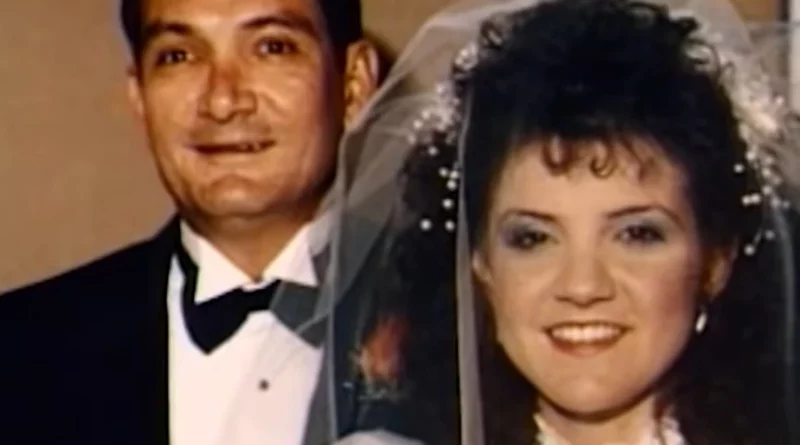Adam John “A.J.” Breaux Disappearance in Houma Louisiana
Adam John “A.J.” Breaux was born on January 14, 1941, in Houma, Louisiana, the youngest of nine children of Adam Ellis Breaux and Mabel Amy Trahan. He lived his entire life in a close-knit, 31,000-person town on Bayou Terrebonne, where he built a reputation as a friendly, dependable figure. Over more than thirty years, A.J. worked as a salesman at Earl Williams Clothing Store, a role in which he was known for his integrity and willingness to help customers in need. He raised three daughters—Monica Larpenter, Tania Guidry, and Melissa Tardo—in a stable, supportive home, even after his divorce. His family recalls a man who valued community, cherished family traditions, and was a familiar face to everyone in Houma’s neighborhoods and local businesses.
Battle with Alcoholism and Path to Sobriety
Despite his community standing, A.J. struggled privately with alcoholism for many years, culminating in a DUI arrest in 1983 that threatened both his career and his responsibilities as a father. That arrest prompted him to join Alcoholics Anonymous, where he committed wholeheartedly to recovery. By 1991, he had maintained sobriety for eight consecutive years—a remarkable achievement in a region where alcohol often played a central social role. His transformation from habitual drinker to sober mentor earned him respect both within AA and among friends who witnessed his dedication to change. This journey underscored A.J.’s perseverance and willingness to confront personal demons head-on.
Role in Alcoholics Anonymous
A.J.’s commitment to sobriety extended beyond his own recovery: he served as secretary of the local AA chapter, managing meeting schedules and group finances, and frequently took on the role of sponsor to newcomers. He was known to be “on call” at any hour for those in crisis, often receiving late-night calls from members battling the urge to drink. The Easy Does It Club, housed in a refurbished warehouse on Bernard Street, became his second home. There, he cultivated deep friendships, offered counsel, and helped maintain the fellowship’s operations. His contributions strengthened the local recovery community and left a lasting legacy of service and compassion.
The Evening of Disappearance
On the evening of Wednesday, August 28, 1991, A.J. attended an AA meeting at the Easy Does It Club. After helping clean up at around 8:15 p.m., he left in his silver 1988 Ford Tempo and stopped a few blocks away at Time Saver convenience store to buy a quart of milk. He joked with the clerk about the price of dairy and told her he was headed home to his daughter’s house on Barrow Street—but he never arrived. That ice-cold milk purchase at roughly 8:45 p.m. remains the final confirmed sighting of A.J. Breaux before he vanished without a trace.
Discovery of the Abandoned Vehicle
Two days later, on August 30, 1991, police discovered A.J.’s Ford Tempo locked and abandoned in Jim Bowie Park, directly across from the AA clubhouse. Inside, investigators found his empty wallet tucked beneath the front seat, two checkbooks (one personal, one for AA funds), and the group’s bank bag containing $165. Crucially, both his car keys and the carton of milk were missing, and the fuel tank was nearly empty despite a $10 fill-up just hours before his disappearance. No signs of violent struggle or blood were evident, and heavy rains had washed away any potential forensic clues.
Witness Accounts and Potential Leads
Several eyewitnesses came forward, each adding layers of mystery. Kenneth Pellegrin—who had known A.J. since childhood—reported seeing him at a pay phone outside a Houma convenience store, wearing loose-fitting pants and looking nervous, while a red compact car idled nearby with three men inside. Later that night, another resident claimed to see a similar red vehicle carrying A.J. and three unidentified men along a rural road eight miles from town. A separate witness, a golf-course maintenance worker, said he saw three men forcing an individual into a white car at the park where the Tempo was eventually found. These consistent details suggest possible foul play but have never yielded a suspect.
The Anonymous Note and Bayou Searches
Roughly two weeks after A.J.’s disappearance, Houma police received an anonymous, typed note signed only “Helene,” alleging that Breaux had shot himself accidentally and been rolled into a nearby bayou in a draw-string cotton sack. The note specified a dam-adjacent location matching Jim Bowie Park. Authorities dredged the bayou on three occasions but found nothing. Investigators and family dismissed the theory of suicide, noting A.J.’s lack of a history of self-harm and the absence of a weapon. Many consider the note a cruel hoax intended to misdirect the investigation.
Media Coverage and Public Awareness
A.J. Breaux’s case first garnered national attention when it aired on Unsolved Mysteries on November 4, 1992 (Season 5, Episode 137), prompting a flood of viewer tips—none of which led to breakthroughs. Over the years, true crime podcasts such as The Trail Went Cold and local television stations—including HTV10’s “Bayou Time” anniversary specials—have revisited the story, maintaining public interest. Despite these efforts, detailed timelines, photo lineups, and reconstructed reenactments have yet to produce viable leads, leaving the mysterious disappearance firmly in the realm of enduring cold cases.
The Family’s Tireless Efforts
Each August, A.J.’s daughters renew their appeals for information. Monica, Tania, and Melissa have distributed thousands of fliers across Terrebonne Parish, appeared on national and local news segments, and established the “A.J. Breaux Project WISH” page on Facebook. The family has offered a $1,000 reward for any tip leading to an arrest, and they maintain direct contact with the Houma Police Department. Even after a judge declared A.J. legally dead in 1998, the sisters continue to hope someone will come forward with the key detail that finally solves the puzzle.
Theories and Speculations
Over the decades, numerous theories have emerged:
- Accidental suicide based on the “Helene” note—widely debunked due to lack of evidence and A.J.’s stable mental health.
- Abduction or foul play, supported by witness accounts of forced removal into a vehicle and the absence of personal effects.
- Voluntary disappearance, though abandoned bank records and his deep family ties make this improbable.
- Serial offender involvement, briefly considered after Ronald Dominique’s 2006 arrest, but Dominique’s crimes began six years too late to be linked.
Despite speculation, no theory has been definitively proven.
Official Investigations and Current Case Status
The Houma Police Department continues to classify A.J. Breaux as a missing person and actively investigates all credible leads, encouraging witnesses to revisit statements or submit new information. Advanced forensic methods, including cadaver dogs and digital analysis, have been employed in recent years, though no new physical evidence has surfaced. Investigators emphasize that someone in the region likely knows what happened that night, and they remain hopeful that a fresh tip—no matter how minor—could reopen critical lines of inquiry.
Conclusion
More than three decades since August 28, 1991, Adam John “A.J.” Breaux’s fate remains one of southern Louisiana’s most haunting mysteries. His abandoned car, cryptic witness sightings, and the family’s unwavering appeals underscore a collective determination to uncover the truth. Without definitive proof of suicide, voluntary flight, or homicide, the case endures as an open inquiry—a testament to the enduring hope that, one day, someone will share the long-buried secret that brings A.J. home.
Discover more from City Towner
Subscribe to get the latest posts sent to your email.




